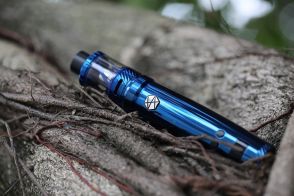Everything You Need to Know About the New FDA Vaping Regulations

The Pre-Market Tobacco Application (PMTA) has gravely affected everyone in the vaping industry. Consumers are not able to purchase the flavors of their choice. Small-scale vape stores have had to succumb to larger more financially robust brands; some are forced to permanently shut down family-run businesses. Renewed Food and Drug Administration (FDA) regulations have created immense confusion, leaving the industry desperately in need of answers.
To begin understanding the newly instated FDA regulations, let us go a few years back to understand the beginning of the changes.
At 8:48 am on May 10, 2016, FDA made an announcement that shook the vaping world as no other event had before. They announced the Deeming Rule. This FDA regulation gives FDA the authority over vapor products. To be more precise, with this regulation in place, all vaping products and devices were now going to be regulated in the same way as combustible cigarettes and other tobacco-containing nicotine products have been regulated (these regulations refer to the 2009 Tobacco Control Act). What had only been a rumor for the longest time was now taking the shape of reality.
The rule took effect on August 8, 2016. In light of this FDA regulation, the FDA would impose a hard stop on the independent vaping industry. The only way out was complex, expensive, and arduous.
In order to be spared from the ax, a pre-market approval process was set in place. With this process in place, only those products that had been on the market unchanged since Feb. 15, 2007 (practically before vaping existed) were to be spared. The few that did exist then were required to file a PMTA for all existing products within two years after the final rule was issued. The PMTA submission process was self-admittedly complex and expensive. Therefore, unsurprisingly, this announcement came as a death sentence to the majority of the vaping industry.
Manufacturers pointed to the lack of specific standards, such as a list of harmful ingredients that would be prohibited, nicotine limits, or rules, which could be willingly enforced to make the product safer for consumers.
The appointment of Scott Gottlieb as the new head of the FDA came as a glimmer of hope for the vaping industry. Soon after his appointment, Gottlieb provided temporary relief to those reeling from the shock waves of the Deeming Rule. The 2018 PMTA submission deadline was now postponed for four years, until August 8, 2022. He also permitted the products to remain on the market while applications were being reviewed. This was a welcome move since the previous administration allowed for the products to be sold only for one year, even if the FDA had not determined their eligibility.
Fast forward to May 15, 2019, and the relief of the vaping industry was washed ashore by Judge Grimes. With only 10 months’ notice, Judge Grimes overturned the extension and ordered a PMTA deadline of May 12, 2020. The onset of the COVID-19 pandemic made the FDA further postpone the filing deadline to September 9, 2020.
In summation, what does this mean for the vaping industry?
The PMTA is an unwelcome, unfair rule. If a vape product was not on the market for sale on or before August 8, 2016, and lacks a complete PMTA, filed for each specific vaping product, on or before September 9, 2020, that product would not be allowed to exist for sale on the US Market.
Effectively, this means that 99% of the vaping industry could vanish overnight.
The witch-hunt, in the guise of an FDA regulation, makes the future of the vaping industry look cloudy.
